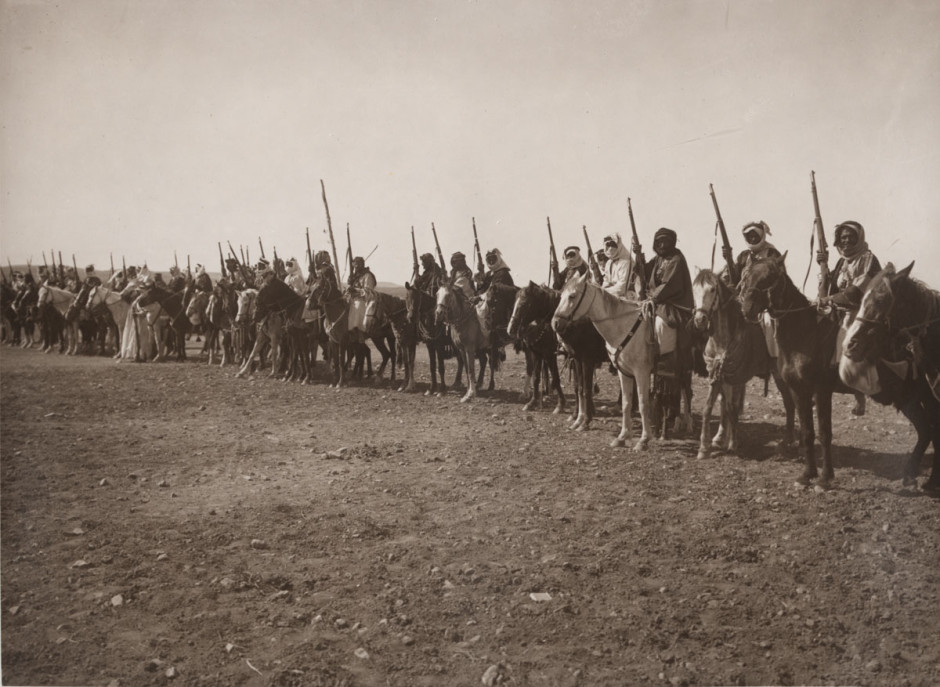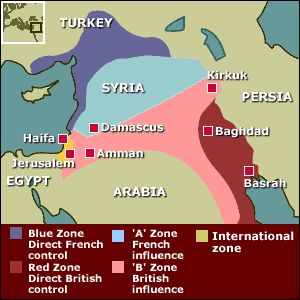The various Sunni jihadist groups, in particular the Islamic State in Iraq and Syria (ISIS), who are battling the Shia regimes in Iraq and Syria, are attempting to carve out a Sunni state in parts of both countries (and possibly also in Jordan).
But this should come as little surprise. These countries are all artificial creations, the fruits of French and British imperialist cartography following the dissolution of the Ottoman Empire after World War I.
Syria and Iraq (then known as Mesopotamia) were little more than geographic expressions prior to the 20th century. But the Allies would give them definite boundaries, which more or less remained stable until recent years.

In a secret 1916 accord between a British colonel, Sir Mark Sykes, and a French diplomat, François Georges-Picot, London and Paris agreed upon the division of Ottoman territories should the Turks lose the war.
They were believers in the notion that the people of the region would be better off under the European empires.
The Sykes-Picot Agreement carved up the Fertile Crescent. France obtained Lebanon and Syria, while Britain took Iraq and Palestine (today’s Israel and Jordan).
Needless to say, no Arabs were consulted.
The deal was formalized by the newly-formed League of Nations after the war. It allocated these territories as “mandates” to be governed by France and Britain. Though the new Iraq was officially designated a kingdom, it was also effectively under British control.
The colonial powers lumped together Sunnis, Shias, Kurds, Christians, and other minorities, with little regard for the animosities these groups had felt towards each other for many centuries.
From the 1950s through the 1990s, pan-Arabists sought to unite the Arab world into one super-state. This failed miserably. Since then, sectarian forms of Islam have replaced secular nationalism as a rallying cry, leading to the present discord in the region.

ISIS’s emergence can be traced to al-Qaeda in Iraq, which arose in response to the American invasion in 2003. The group was active in the insurgency in Iraq, but when civil war broke out along sectarian lines in Syria in 2011, many ISIS members crossed the border to fight with other al-Qaeda-affiliated groups against the Shia Alawite regime of President Bashar al-Assad.
Now they are back in Iraq again. One of the reasons they were able to easily take cities like Mosul and Tikrit is because these are fundamentally Sunni cities that feel marginalized by Prime Minister Nouri al-Maliki, a Shia, according to Michael O’Hanlon, director of foreign policy research at the Brookings Institute in Washington, D.C.
Given the growing Shia-Sunni war throughout the region, other states and groups have also lined up with ISIS. A large part of their financing comes from wealthy benefactors in Saudi Arabia, Qatar and other Gulf states.
On the other hand, Assad and Maliki depend on arms and money from fellow-Shia Iran. In little Lebanon, itself a microcosm of the region, the country’s Shia militia, Hezbollah, is fighting alongside Syria’s army, while Sunni Lebanese provide aid to the rebels.
The conflicts in Iraq and Syria are to some extent proxy wars that pit Saudi Arabia against Iran.
It seems the arbitrary borders created by the Sykes-Picot Agreement, the product of a now long-discredited zeitgeist, may soon themselves become little more than history.
Henry Srebrnik is a professor of political science at the University of Prince Edward Island.


